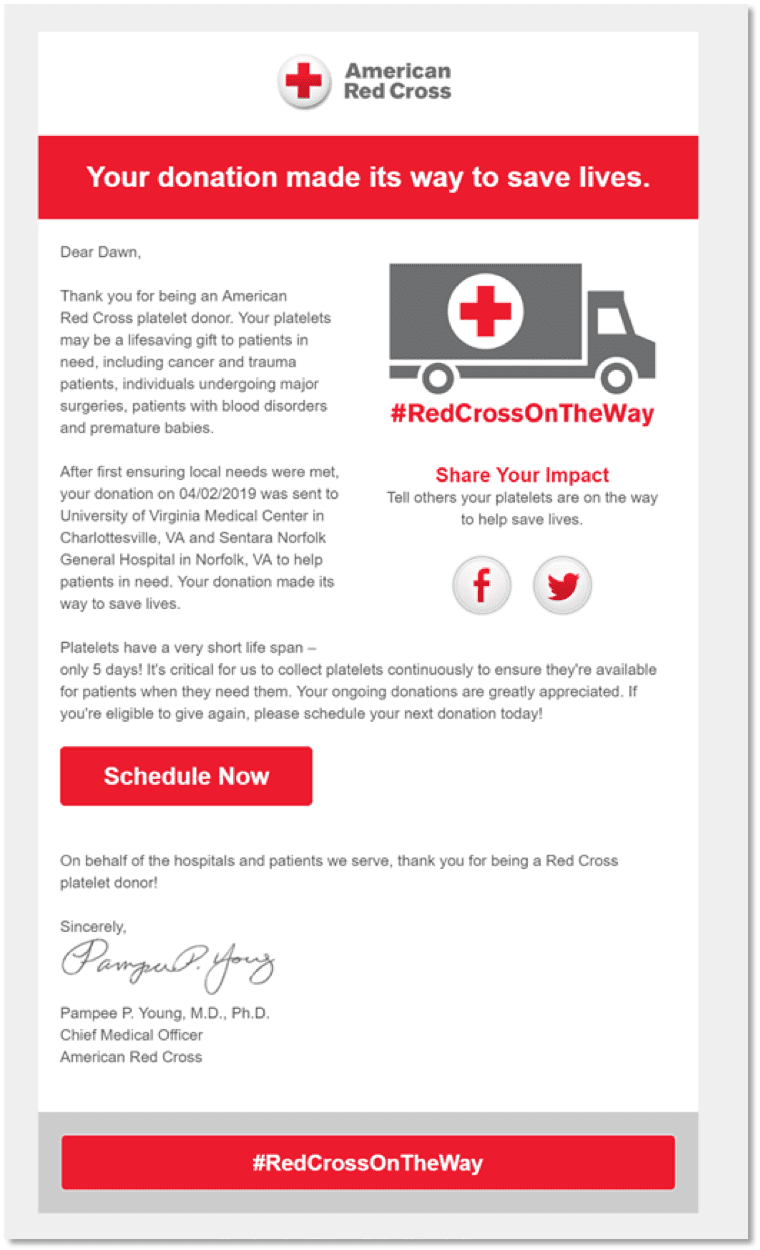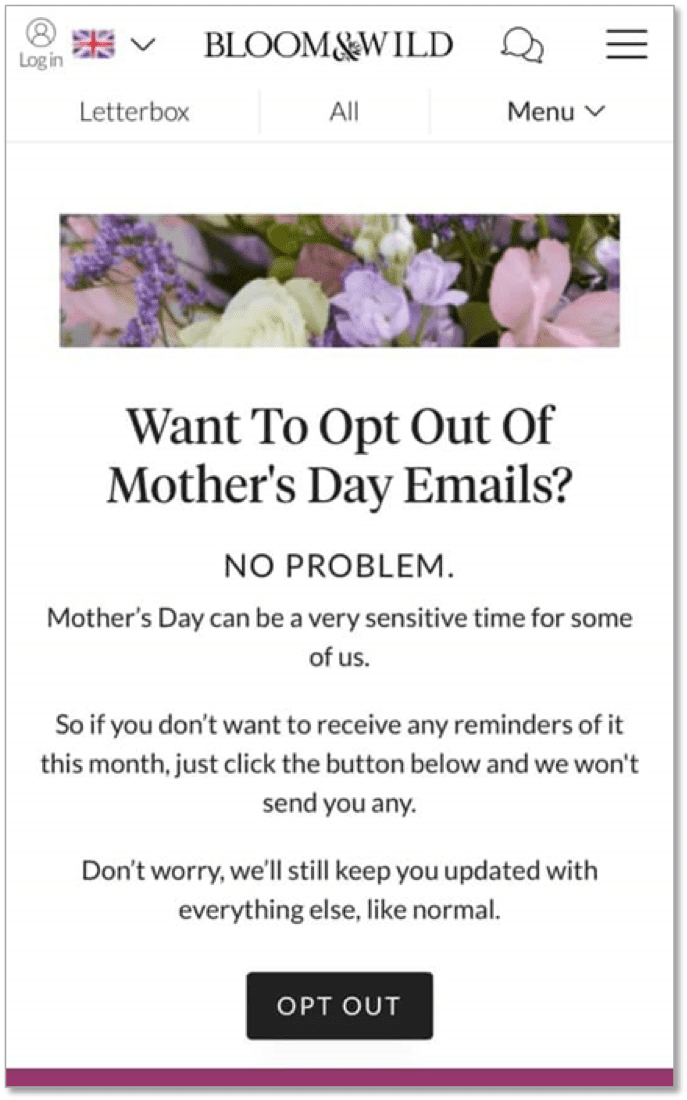As mentioned in Part 1 of this blog series, the term “growth marketing” is widely embraced in the Silicon Valley tech community and is gaining traction fast with early adopters at bleeding-edge brands.
But outside of that bubble, growth marketing is a concept that is misunderstood by the mainstream. We’re here to dispel that confusion.
In fact, I just came back from Emailing 2020 in Prague, where I explained what growth marketing is all about.
Great to see empathy and caring being discussed at email marketing conferences 💪 @jencapstraw #emailing2020 pic.twitter.com/9DuWcdQx52
— Elliot Ross (@iamelliot) October 3, 2019
We started this series by clarifying what growth marketing is NOT. Now we’re back to dive deeper into what growth marketing actually means. In fact, if you’re reading this blog, it’s likely something you’re already doing!
Growth Marketing Starts With Your Mindset
At its core, growth marketing maximizes business growth, with a heavy emphasis on retention.
That retention bit is the real differentiator here. I described it earlier as the business embodiment of the golden rule.
Because all style and no substance doesn’t promote retention. It takes something more to build long-term, loyal customer relationships.
And that’s where having a growth mindset comes in.
A concept coined by Stanford professor of psychology Carol Dweck, a growth mindset is one of our core values here at Iterable. It not only makes you a better marketer, but it also makes you a better person.
So what’s growth mindset all about? Let me break it down for you:
- It’s a mentality that spurs continuous pursuit of innovation.
- It’s creative problem-solving and fresh solutions.
- It’s proactivity to embrace challenge and get out of your comfort zone.
- It’s a willingness to learn and evolve. And sometimes even fail.
- It’s collaboration with thoughtfulness and respect for others.
- It requires some humility and acceptance of constructive criticism.
- Ultimately, a growth mindset leads to higher levels of personal and professional achievement.
The opposite of a growth mindset is a fixed mindset, one that believes skills and talent are innate and success is predetermined. A fixed mindset is a big barrier to growth marketing.
It’s possible to transcend from a fixed mindset to a growth mindset, but it requires effort and meaningful emotional change. It’s evolving from, “That’s the way we’ve always done it,” to, “What can we do to improve?”
So What’s a Growth Mindset Got to Do With Growth Marketing?
I’m so glad you asked.
Growth marketing is a growth mindset in action, in the context of email and cross-channel engagement.
It’s customer-centric, building solutions around their needs rather than hammering them with company objectives. The goal is to drive brand affinity and loyalty to maximize customer lifetime value (LTV).
Agility and iteration support growth marketing success. Testing is often a big factor—but testing smart, rather than testing for the sake of testing—is important to making meaningful gains. We’ll talk more about testing in a future blog post.
Growth is a concept that got its footing in the startup world—but any organization can (and should!) apply these concepts.
Unfortunately, legacy brands that are mired in bureaucracy, status quos and outdated thinking will find savvier, hungrier competitors chipping away at their market share. Siloed and sluggish marketing orgs will struggle as disruptive companies capitalize on growth marketing fundamentals to seize opportunity.
Established brands with hefty budgets often have the financial resources to shift to more growth-centric strategies, but they can fail to generate the cultural and digital transformation necessary to make growth a reality.
Relationships Are at the Heart of Growth Marketing
Remember—what it takes to cultivate and nurture a business relationship is quite similar to any other relationship in your life. Communication, transparency, kindness, support, respect and dignity all have a place in growth marketing.
Growth marketing comes with a heaping dose of empathy, and even morality. Messaging is not just personalized, but humanized. It’s about making connections and appealing to our emotions.
Here are four of the most interesting emails that embody growth marketing to cross my desk this year.
4 Inspiring Examples of Empathy in Action
1. American Red Cross creates connections with personalization.
Look carefully at that second paragraph in this American Red Cross email: “After first ensuring local needs were met, your donation […] was sent to University of Virginia Medical Center […] to help patients in need. Your donation made its way to save lives.”
The recipient of this email was so moved by this personalized message that she shared it to social media. She felt she made a real difference in her community. That’s the power of exceptional growth marketing. It makes the recipient feel deeply connected to your brand. My friend Dawn will surely be making future donations to the American Red Cross.
2. Lyft promotes allyship with pronoun selection.
I was personally the recipient of this message from Lyft, which invites customers to choose their pronouns and learn more about Lyft’s LGBTQ+ initiatives. I was so impressed that Lyft expressed such sensitivity to their customers’ dignity, especially those who are currently struggling to earn respect for their self-identities.
There is no struggle from Lyft though. Lyft will address you however you’d like to be addressed—a simple yet meaningful act to trans and gender-nonconforming customers and their allies.
3. Bloom & Wild addresses subscribers with sensitivity.
The email marketing community went wild when this message was shared on Twitter earlier this year. Inviting customers to opt-out of marketing? That’s just NOT something that’s done. But here it is—an invitation to pass on holiday promotions that might be triggering.
Opting out of Mother’s Day messaging from Bloom & Wild won’t protect a customer from the onslaught of Mother’s Day promotions from other brands—but for the folks who do struggle with the holiday?
The next time they want to order flowers, they’ll remember that Bloom & Wild cares about them and their emotional well-being.
4. Penzeys Spices gets political for a purpose.
Bill Penzey, founder of Penzeys Spices, has always made it a point to infuse his marketing with his heartfelt point of view on social and political issues, going back to his direct mail roots in the 1980s. We wrote about Bill and Penzeys Spices last year when he revealed just how much his activism was benefitting his bottom line.
In this example from this summer, Bill invites customers to buy spice kits at a discount to donate to Puerto Rican families who are still rebuilding their lives after devastating losses during Hurricane Maria.
His email creative flies in the face of a number of so-called best practices (e.g., lengthy copy, text embedded in images, amateurish design, no call to action button). But his strategy works, because his customers are fiercely loyal, due to his exceptionally vocal opinions.
A side note on political messaging
You’ve surely noted that some of these examples could be perceived as quite polarizing. And that’s what’s interesting about growth marketing. It doesn’t necessarily strive to be all things to all people. Alienating certain demographics is acceptable when they don’t align with your company’s values—because they catalyze powerful brand affinity among those who do.
And while we most often see political marketing messaging leaning to the left, it often doesn’t matter where a company’s values fall on the political spectrum, as long as they are authentic, closely-held beliefs. In fact, companies known for their ultra-conservative values, such as Hobby Lobby and Chick-fil-A, are doing better than ever before.
Ready to Implement Empathy?
If you’re looking to start infusing potentially divisive strategies, proceed with caution. Simply circulating some political or social messaging could backfire in a big way.
Authenticity and transparency are essential to growth marketing success, because today’s audiences are the most informed, intuitive and connected in history. And they will call you out if they don’t think you are genuine. Then you won’t appeal to anyone.
A good starting point is to just put the customer first. Be helpful. Evaluate existing email and cross-channel programs and think critically about how you might feel in the recipient’s shoes.
Are you reaching out for the sake of reaching out? Or do your campaigns consistently deliver value and address recipients’ needs? Do they appeal to them as a human? And do you have the right people and technology to level up your growth game?
Be on the lookout for the next post in this series: We’ll dive even deeper into the meaning of growth marketing, as well as the role of smart testing and iteration to achieve business goals.
In the meantime, join me in Iterable’s next webinar on Oct. 17, where I team up with Seth Weisfeld, Product Manager at Pinterest, to offer a crash course on cutting-edge email marketing. We’ll dive deep into the future of email and share more innovative examples from today’s top brands. Don’t miss out!

































